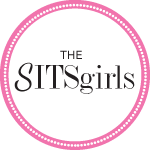There's nothing I love more than gathering sewing finds while thrifting. I've been fortunate enough to score not only an antique Singer sewing machine, but loads of presser feet and other sewing accessories. Presser feet can be expensive, depending on the attachment. As a seamstress of meager means, such prices are not always in my budget. So it brings me a lot of joy when I find them in bulk for just a few dollars. But what do all those sewing feet do?
PART ONE: SEWING MACHINE PRESSER ATTACHMENTS -- WHAT THEY ARE AND HOW THEY WORK

A standard presser foot (aka a universal presser foot) does all you basic stitches, straight and zigzag, and has a hole wide enough to adjust to your widest stitch settings.
An adjustable zipper foot is what is used to attach a zipper with ease. Yes, there's an easy way to do this! Slide the foot until your sewing needle fits in either slot, left or right side (depending on which side of the zipper you're on). It guides the needle right along the edge of your zipper. This foot is also known as a cording foot, as it can be used to make piping. I will soon be doing this for a chair I plan on reupholstering, so I will show a tutorial on making piping once it's done.
This is used to help attach
binding to your fabric. It will thread through the cylinder shape piece, stitching it perfectly in place. This little foot is marvelous because that small cylinder keeps your binding set in place and you don't have to struggle to hold it aligned while you sew.
This particular foot often causes quite the debacle. There is always the war between gathering foot vs ruffler. It gathers fabric, creating very soft ruffles. I personally think this foot is best served for shirring.
I love this foot! Honestly, I would make a necklace out of it and carry it around with me. It does as it says, stitches along the edge of the fabric. It's great for those hem's with a close stitched edge. It can also sew lace to the edge of fabric beautifully. It's perfect for attaching ric rac. Even better, it can sew two pieces of fabric together, you can sew two pieces of lace together, attach piping, or use it for bias folds. Those few little grooves can do sew much, it's marvelous!

The creme de la creme of attachments, the ruffler is one of my favorites. It creates perfectly pleated ruffles, large and small. It's actually quite amazing to watch. It's a bit tricky to use, but once you get it, it's like magic! It honestly does not compare with the gathering foot, that's why I say that attachment is best used for shirring. A ruffler is more expensive, but you wouldn't regret the purchase. I promise! I am going to be working on some pillow cases and thought of sharing a video tutorial on using one, any interest?
The hinged presser foot is commonly used for sewing over seams and uneven surfaces. It's not for reverse sewing.
Another attachment gem, the tuckmarker creates tucks and pleats up to 1" wide without having to tack them. Check out
this pleated pillow and you'll see what I mean, this is what it does.
The hemmer sews very narrow seams. Kind of how the edge stitcher works, but its sole purpose is to sew very close to an edge. The edge stitcher can sew two pieces together, this just sews hems small and easy. The groove on the back of your foot will determine how wide the hem will be.
A step up from a standard hemmer, the adjustable hemmer is your better bet. It makes hems ranging from 3/16" to 1". Just loosen the thumb screw and slide it left or right until you reach the desired width of your hem.
These tools can be truly amazing, making any sewing job easy. I cannot wait to show you guys some tutorials using them, that ruffler especially. I hope this info was helpful to you. Now, the next time you're out at the thrift stores, be on the lookout for these sewing accessories. I will keep my eyes peeled too, and when I come across more, we'll do part two of sewing attachments.
Happy sewing!
Steph

































